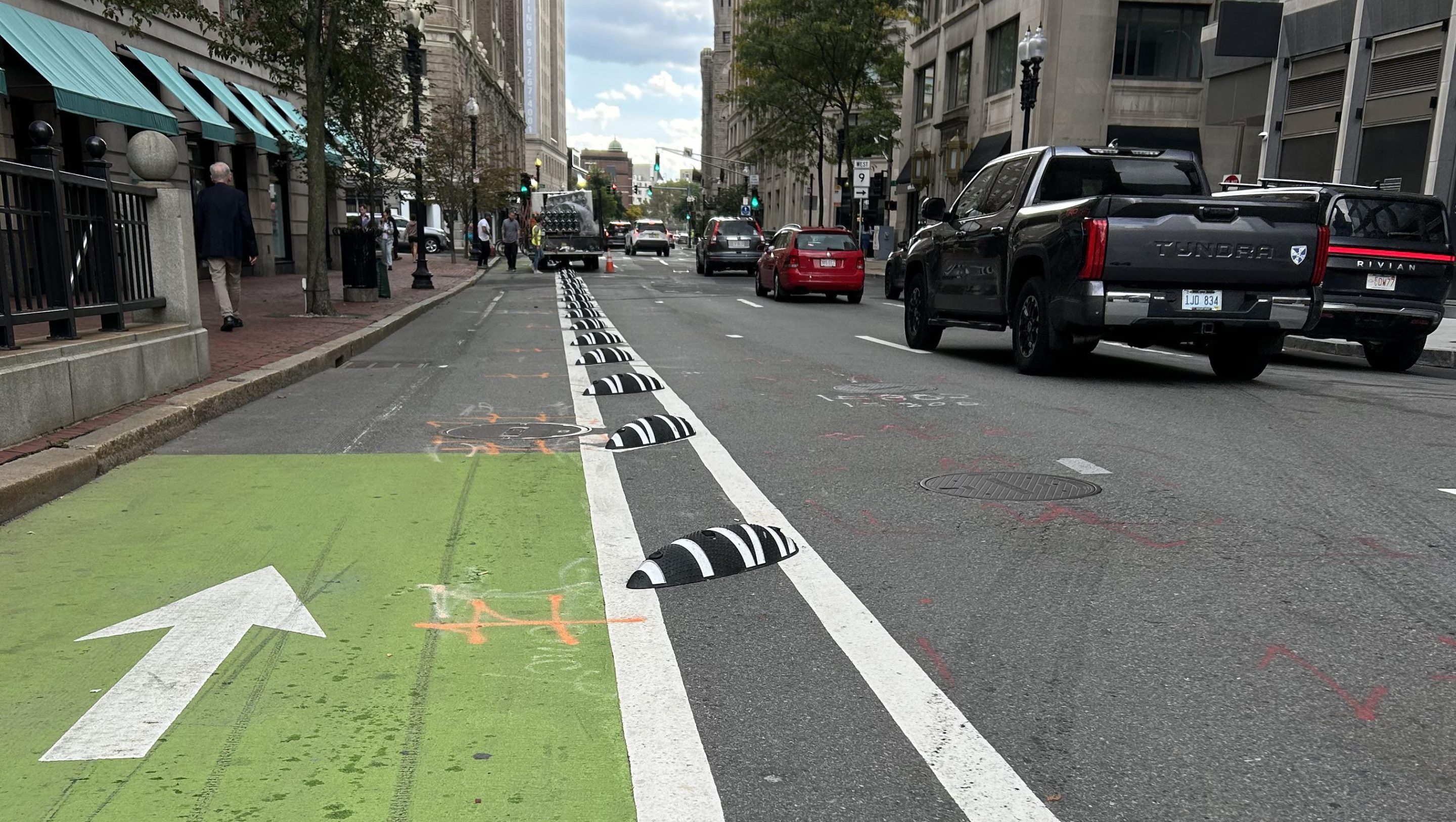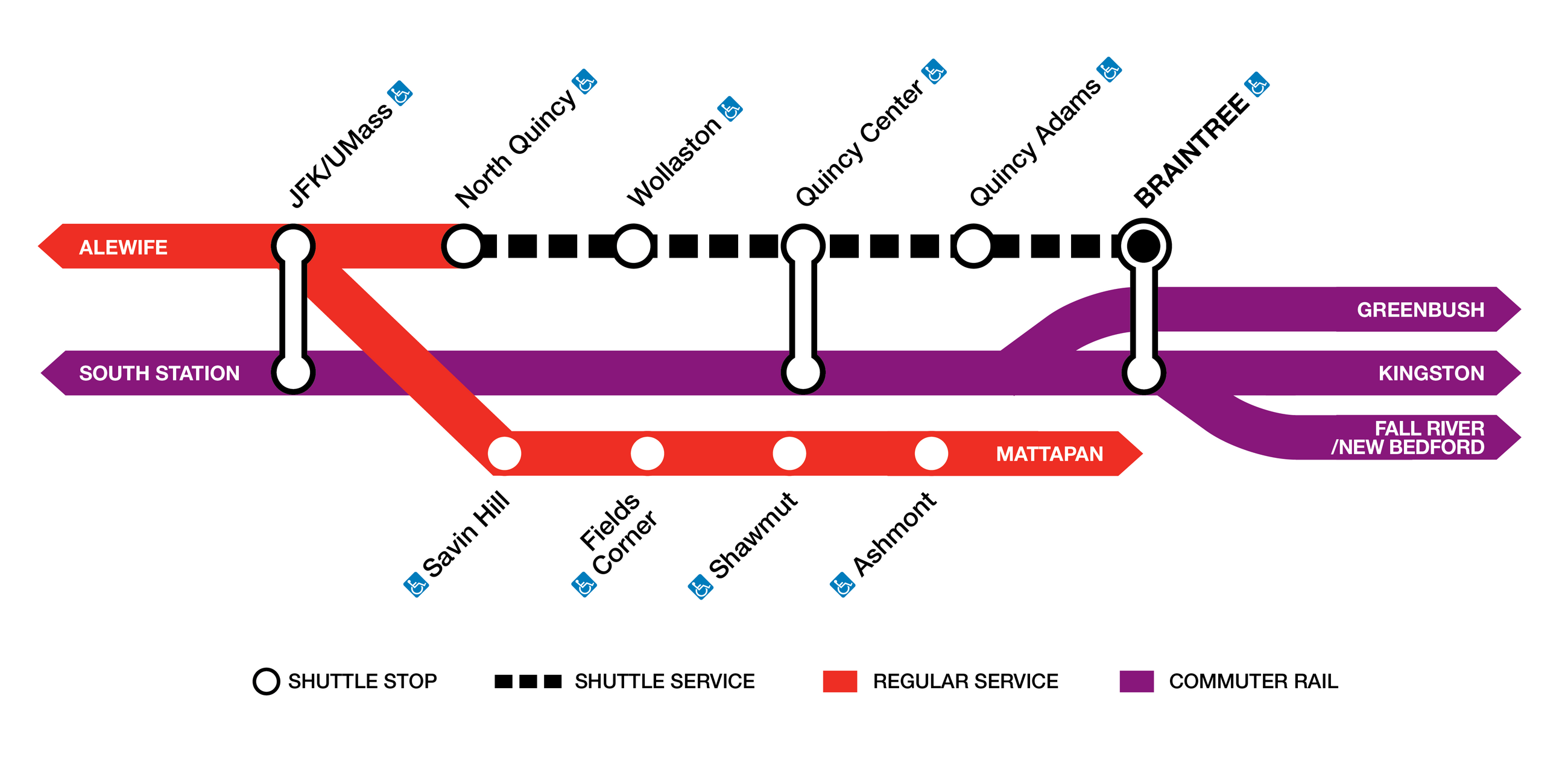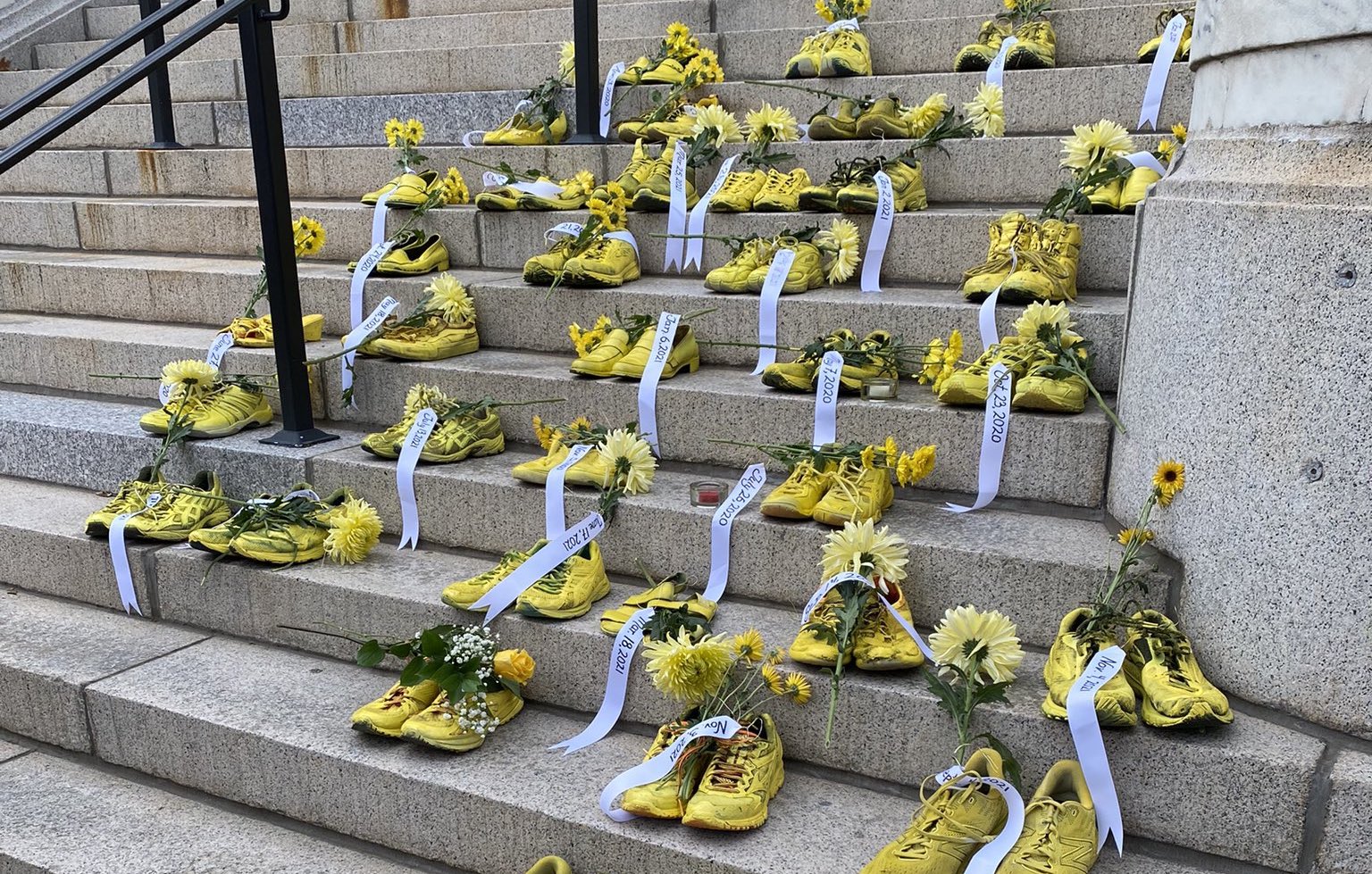Last week, City Hall quietly started installing new protective barriers along the Arlington Street bike lane in Back Bay – the start of a wider initiative to replace plastic flexible-post bollards with more durable materials along the city's bike lanes.
Peter Cheung, a well-known leader in Boston's bike transportation advocacy community, found workers installing new Zicla Zebra barriers along Arlington Street last week and captured the photo above.
Also last week, City Hall published a new webpage describing how the changes on Arlington Street fit into a broader initiative for "replacing flexposts installed through past safety projects with more durable materials."
Harder, better, faster, stronger
Jascha Franklin-Hodge, the city's Chief of Streets, explained to StreetsblogMASS in a phone conversation Tuesday afternoon that the city plans to test several different barrier types on the city's streets in the months to come.
"Flexposts are not great. They’re somewhat uniquely a piece of infrastructure that is disliked by everyone who encounters them, whether they're people on bikes or people driving," said Franklin-Hodge. "So we’ve been undertaking this project to identify alternatives that can provide better protection, be more durable, and manage the flow of different roadway users while also providing some flexibility for emergency vehicles."
"Long-term, our goal is to move away from flexposts in most circumstances," he added.
In addition to the new Zebra barriers on Arlington Street, the city also plans to install new cast-in-place concrete islands on several other streets across the city to provide better protection for bike lanes and crosswalks.
Among other locations, Franklin-Hodge told StreetsblogMASS that the city is planning to install these new concrete barriers along the two-way segment of the Boylston Street bikeway, between Tremont and Charles Streets, within the next few weeks (see rendering below).
"These cast-in-place concrete barriers – we've been calling them CIPCON – are an exciting and innovative thing for Boston. Basically, you pound rebar dowels into the roadway, build a concrete form in the shape of whatever you want, and then you pour concrete in, and attach any signs or whatever you need to finish it," Franklin-Hodge explained. "It’s something we still consider to be 'quick-build' – it does not require any excavation or new curbs. They're not like the islands we installed on Tremont Street (in the South End), which were extraordinarily difficult to construct. These are something we can install in a day, rather than in a multi-year project."

Franklin-Hodge said that the city is planning to install some of the new cast-in-place curbs along the two-way segment of the Boylston Street bikeway next to the Boston Common later this fall (rendering above).
But the new features won't only be used on streets with bike lanes.
The city is also planning to use cast-in-place concrete curbs for a variety of other traffic-calming purposes, like keeping cars away from crosswalks, and providing quick-build median islands in wider roadways.
At a Boston Public Improvements Commission meeting earlier this spring, cast-in-place concrete islands appeared in plans for several street repair projects in the Public Works Department's pipeline, including on Euclid Street in Dorchester, Armington Street in Brighton, and McBride Street in Jamaica Plain.
Zebras on Arlington
On Arlington Street in Back Bay, the city is testing Zicla Zebra barriers, which are elongated, molded plastic domes with white reflective stripes. Its manufacturers describe the Zebras as a "highly durable offering very good visibility" and "high impact resistance from any angle."
Several other cities have used Zebra barriers along their bikeways, including Houston, West Palm Beach, and New York.
The Zebras are bolted into the pavement in the buffer zone between the bike lane and the adjacent car lanes, occupying the same space where the City of Boston had previously installed flexible-post plastic bollards last fall.
Franklin-Hodge explained that the Arlington Street bike lane is "fairly constrained" such that a concrete barrier would have been a tighter fit, so the city is trying out the Zebras in this location instead.
If they work well, the city could eventually deploy them in other locations, but they'll only be on Arlington Street for now, he said.
"We’re going to monitor, and see how they perform, and get feedback," said Franklin-Hodge.
Here's a quick video of the new barriers, also courtesy of Peter Cheung:






